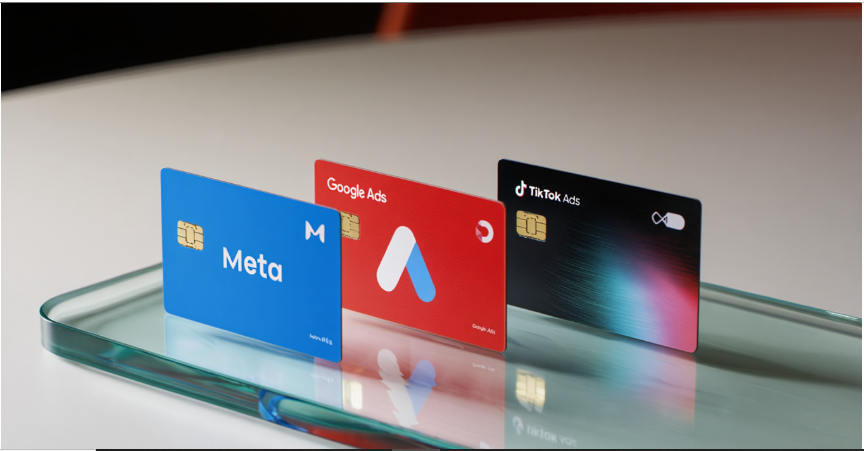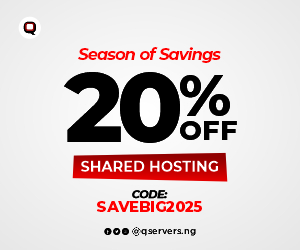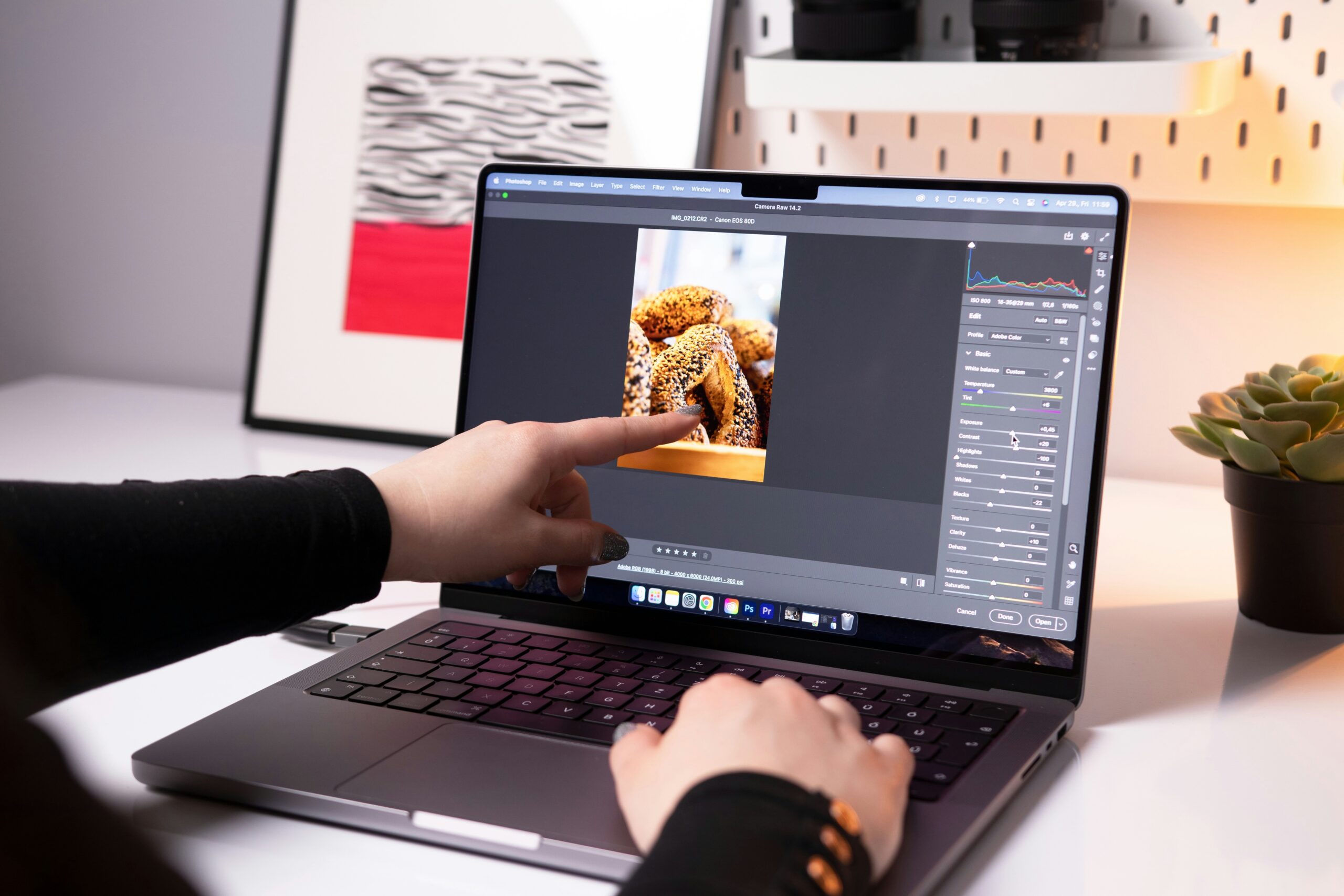A media buyer doesn’t work with ads, but with systems.
Launching a campaign on TikTok, Facebook,
or Google requires not only creativity but also the right payment tool.
A card here is not just a means of payment, it’s a tool for access.
If a card is declined, the ad account stops, the audience is lost,
and the campaign becomes unprofitable.
What Gets In The Way
Regular bank cards are made for consumer payments.
They work in supermarkets and online stores,
but they aren’t designed for advertising budgets with dozens of transactions per day.
Banks don’t know that payments are going to ad platforms,
so transactions often trigger anti-fraud checks.
The media buyer’s task isn’t to prove to the bank that the spend is legitimate.
Their task is to run campaigns without pauses.
What The Right Card Solves
The right card is a channel through which money enters ad systems.
It needs to work reliably in the required regions,
handle the necessary limits, and be topped up quickly.
The card shouldn’t create pauses in the workflow.
If the ad account scales, the card should scale with it.
What To Look For When Choosing
The first factor is geography.
If the ad platform checks BIN codes,
the card must match the region of the campaign.
The second factor is limits.
If the daily budget is several thousand dollars,
the card must support that volume.
The third factor is ease of top-up.
Transfers via crypto, SWIFT, or P2P should be instant, without waiting.
The fourth factor is transparency of fees.
Media buyers don’t have time to recalculate the balance after every transaction.
Our Ranking
1:Spend.net
Spendnet is a financial platform for virtual dollar cards.
The platform offers cards for Facebook, Google Ads, and TikTok,
as well as a universal card for payments across multiple platforms.
Automatic 2% cashback returns part of the ad budget directly to the card.
Free Spend.net card issuance removes initial setup costs.
Customisable top-up fees allow control over operational expenses.
No transaction, exchange, or withdrawal fees simplify net margin calculation.
Transparent reporting in the dashboard helps quickly reconcile spend and budgets.
24/7 live chat support speeds up payment issue resolution.
Must Read: How To Start A Blog With Interserver
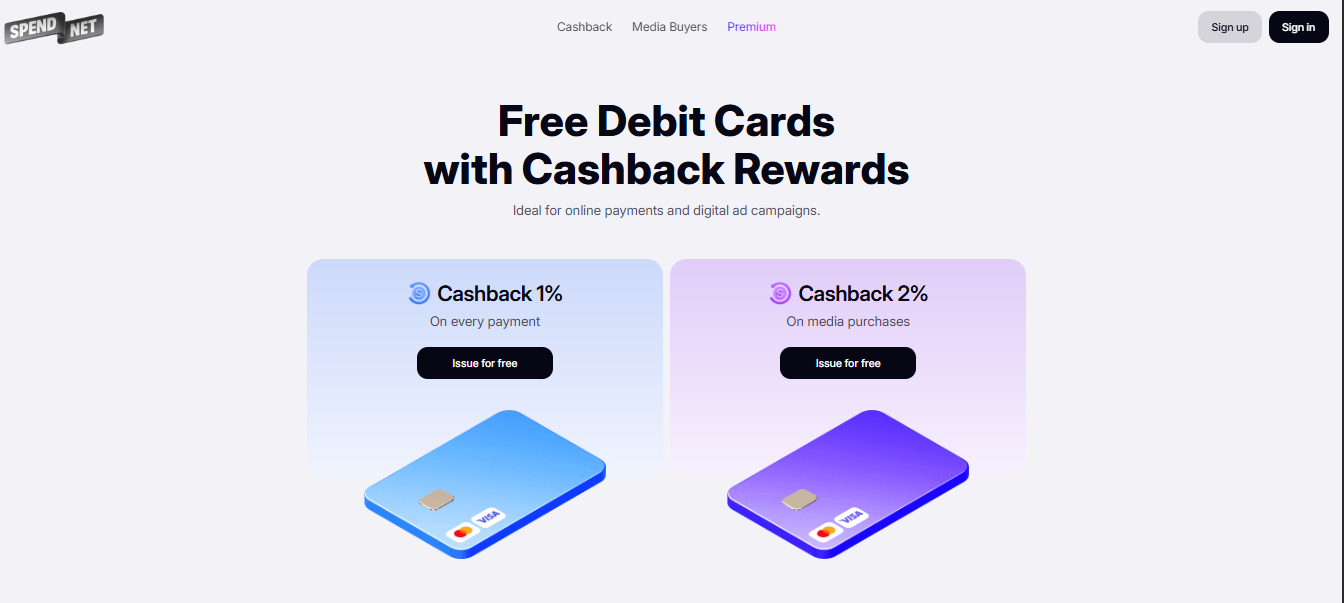
Technical specs:
- BINs: 20 BINs to minimise risk payments
- Cashback: 2% on ad spend, automatic accrual and display in the dashboard
- Card issuance: free
- Fees: none for issuance or transactions; top-up fee is user-defined
- Reports: CSV and XSL export
- Security: 3D Secure
- Cryptocurrencies: USDT, BTC
- Registration: Google or email
- Support: 24/7 live chat
2: PSTNET
PSTNET is a virtual card platform focused on media buying.
It issues separate card categories with BINs for TikTok, Facebook, and other platforms.
Platform-specific cards improve payment approval rates and reduce declined transactions.
The universal ad card handles mixed payments across platforms.
New users can deposit in USDT without fees.
The PST Private programme offers 3% cashback and up to 100
free cards per month without ad spend verification.
A BIN checker shows average spend, approval rates,
and billing thresholds to help select cards for a campaign.
The mobile app simplifies balance control and limit management.
Personal managers and support via Telegram, WhatsApp, and live chat ensure fast communication.
Must Read: Blog Vs YouTube Channel – How To Make $5,000 Online Monthly For Beginners
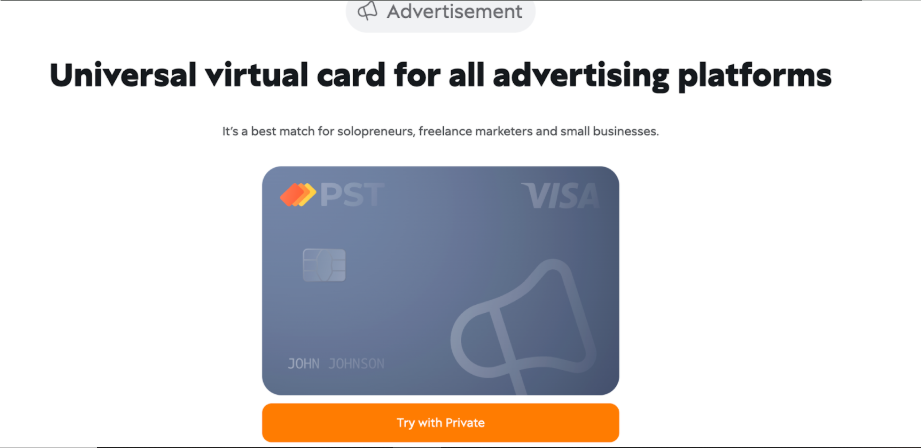
Technical specs:
- BINs: 25+ unique BINs for US and Europe
- PST Private programme: 3% cashback, up to 100 free cards per month without spend verification
- BIN checker: average spend, approved/declined rate, billing thresholds
- Fees: none for transactions, withdrawals, or blocked card operations
- Top-up fee: from 2%
- Security: 3D Secure and two-factor authentication
- Top-up: 18 cryptocurrencies including BTC, USDT TRC20/ERC20, plus SWIFT/SEPA and Visa/Mastercard
- Team tools: task allocation, card limits, auto top-up, sub-account creation
- Reports: full transaction history and cashback display online
- Registration: Apple ID, Google, Telegram, WhatsApp, or email
- Support: 24/7 personal manager via Telegram, WhatsApp, live chat
3:EPN
EPN focuses on speed and simplicity.
The platform issues Visa and Mastercard virtual cards from US banks.
Cards are suitable for international traffic and Google Ads payments. 3D Secure cards are available for security.
The service emphasises fast card creation and top-up.
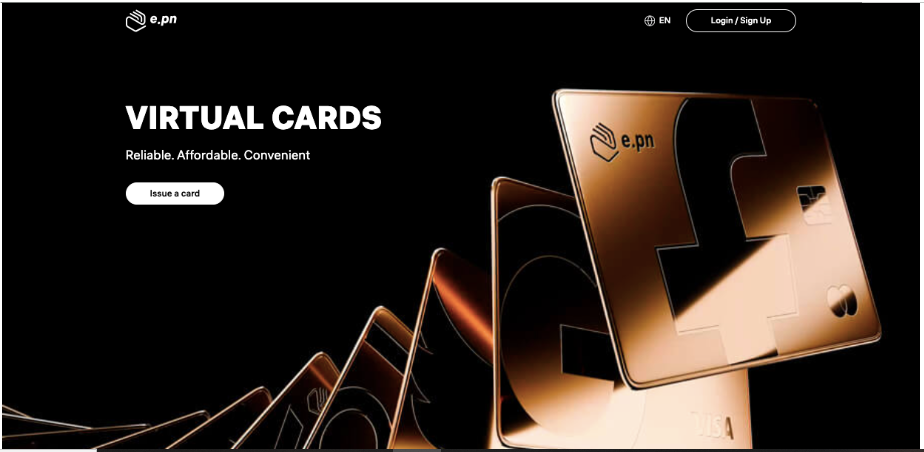
Technical specs:
- BINs: 20 trusted BINs from US banks
- Crypto top-up: USDT (TRC20), BTC
- Standard top-up: SWIFT/SEPA, Visa/Mastercard
- Top-up fee: from 2.5%
- Team tools: task distribution, role assignment, card limits
- Registration: Google account or email
- Support: 24/7 via Telegram or ticket system
4: CardsPro (Capitalist)
CardsPro is part of the Capitalist platform for arbitrage.
Extended registration and verification are required.
Two card lines are available: universal Capitalist cards and special CardsPro for ad spend.
Cards are manually selected for platforms, with BINs and usage terms visible in the dashboard.
WebMoney partnership offers 5% cashback on top-ups. Bank transfer top-up is available for businesses.
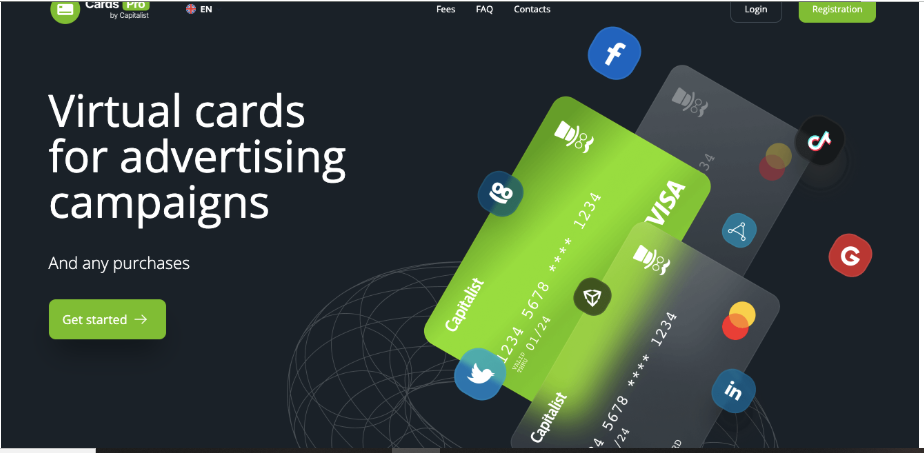
Technical specs:
- BINs: 11 BINs from issuers in the US, UK, and Estonia
- Fees: no account top-up fee; 4% fee for card top-up; minor additional fees for card operations
- Security: 3D Secure on selected BINs
- Top-up methods: cryptocurrencies (BTC, USDT TRC20/ERC20), WebMoney; bank transfer for businesses
- Team tools: task allocation and role assignment
- Reports: financial operation export
- Registration: website forms, brief manager interview, verification
- Support: via Telegram
4: YeezyPay
YeezyPay offers Visa, Mastercard, and UnionPay virtual cards.
The main interface is a Telegram bot.
All operations and reports are accessible through the bot.
Zero transaction and withdrawal fees eliminate extra losses.
Top-up is available in USDT (TRC20), withdrawals are processed on request via support.
24/7 support is available through Telegram.
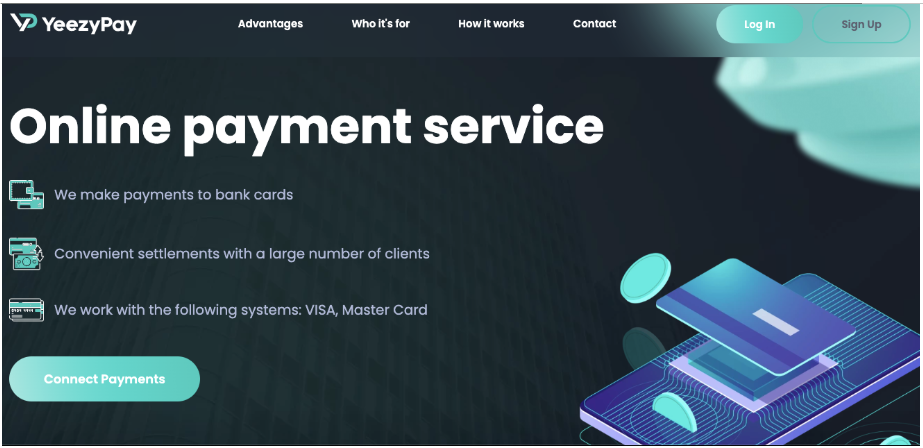
Technical specs:
- BINs: 5 BINs for US and Europe
- Fees: zero transaction and withdrawal fees
- Top-up: USDT (TRC20)
- Withdrawal: via support request
- Reports: via Telegram bot
- Registration: through Telegram bot
- Support: 24/7 in Telegram
How To Avoid Losing Money On Tests
Campaigns start with testing. During tests, it’s important not to spend more than planned.
The card should allow multiple accounts for different ad accounts and track balances separately for each.
This prevents confusion and helps measure the performance of a specific campaign.
Each platform has its own rules. TikTok requires one set of BIN codes, Facebook another.
A card created for a specific platform will pass checks and work without interruptions.
Universal cards are often blocked. That’s why media buyers choose
specialised services that issue cards for specific platforms.
How A Workflow With The Right Card Looks
The media buyer logs into a service, issues a card in a few minutes, tops it up conveniently,
and links it to the ad account. From there, transactions are visible in the service dashboard,
and all spend can be tracked per account.
This frees up time for working on creatives and analytics.
No service covers all needs.
Sometimes one is better for TikTok cards, another for Facebook, and a third has more convenient top-ups.
Media buyers should always have a backup.
The right approach is not to search for a universal solution but to
create a pool of services and allocate different tasks across them.
Fees and blocks directly affect return on investment.
If a card is blocked mid-test, the whole test budget is lost.
If top-up fees are higher than competitors’, net margin falls.
Media buyers manage not only creatives but also payments.
The right card keeps ROI at the calculated level.
When budgets increase, card problems become more visible.
A mistake on one account can mean tens of thousands lost.
Experienced media buyers start tests across multiple services, check stability,
and only then scale through verified services.
This reduces risks and builds a system capable of handling high volumes.
How To Choose A Service
The goal isn’t to find a perfect brand but to create a process that doesn’t break.
This requires identifying key platforms, calculating budgets,
picking cards for each platform, and testing services in advance.
This upfront effort saves money when scaling.
Must Read:How To Earn N500k From Jumia Affiliate Program
A media buyer plans card strategy like creative strategy.
Tests are set up, working options chosen, scaling occurs, and risks are diversified.
If one service fails, another is used. If one top-up method becomes expensive, an alternative is used.
This is a workflow based on flexibility.
Conclusion:
A card for ad payments is a part of media buying.
It affects audience access, account stability, and ROI.
A young media buyer who learns to manage cards properly gains
control over the most crucial element: uninterrupted ad spend.
Sharing is caring.






